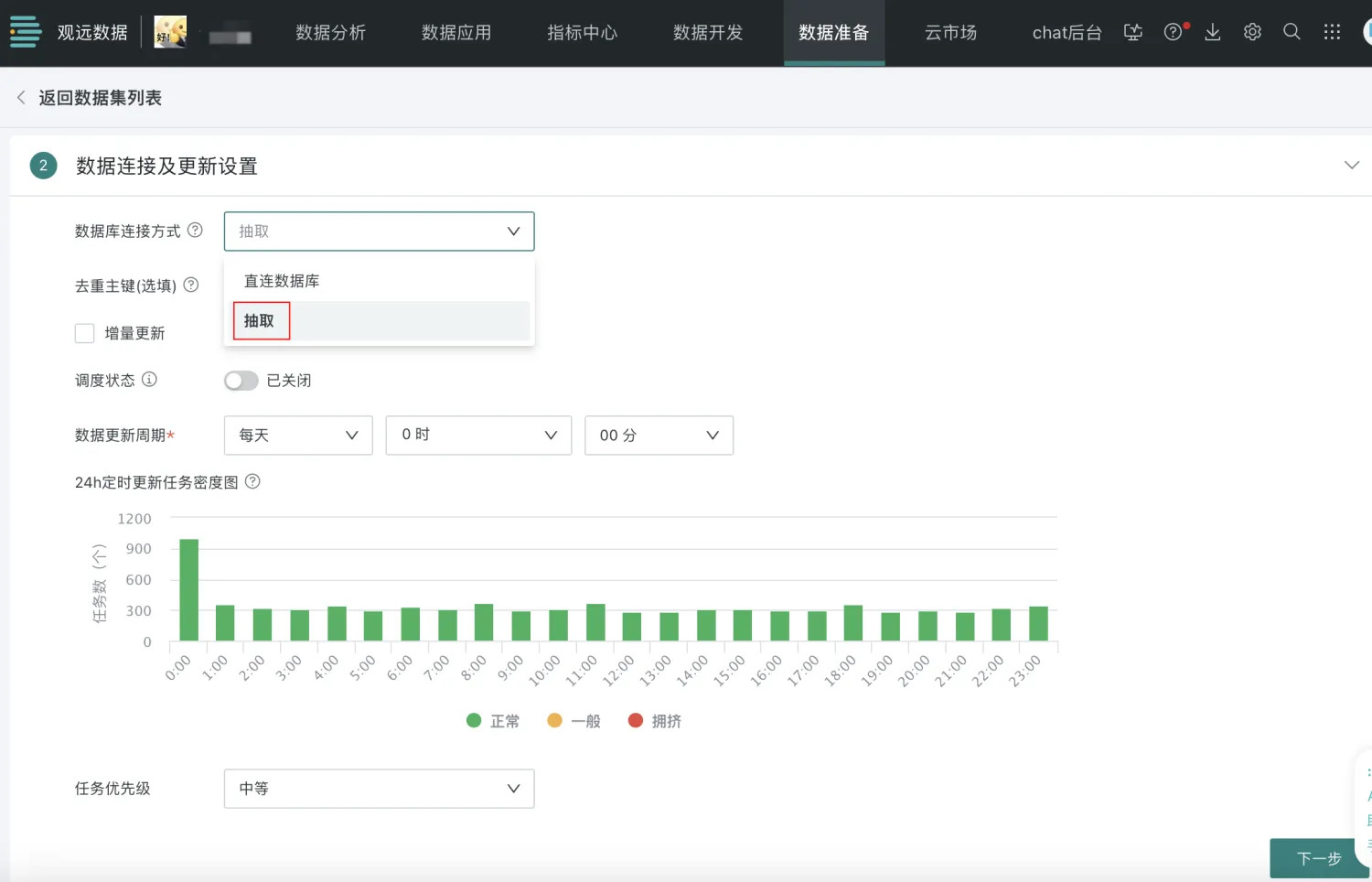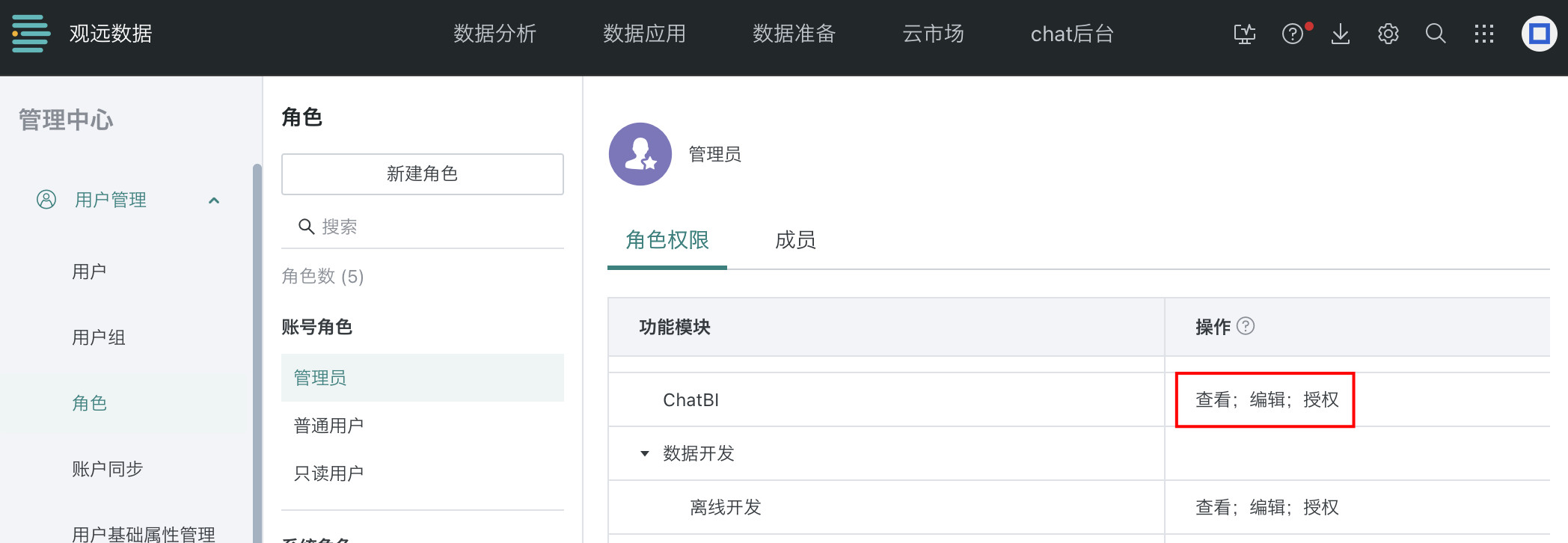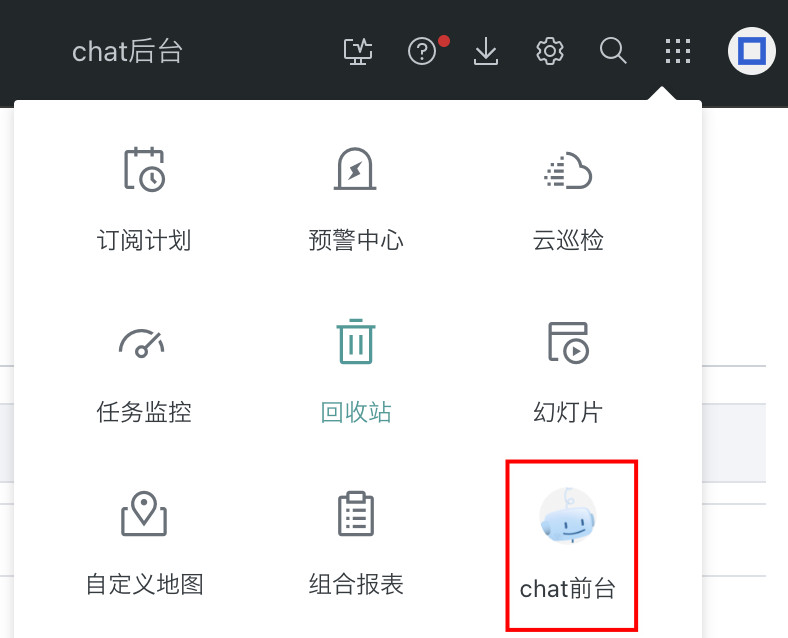BI Platform Data Preparation and Permission Configuration
1. Data Preparation
1.1. Overview
ChatBI data queries are based on existing datasets, so you need to prepare the datasets to be integrated before creating ChatBI topics.
From the perspective of rapid implementation, we recommend that datasets have one or more of the following characteristics:
- Data has been processed into ADS layer wide tables that can be used for business self-service data retrieval.
- Avoid using data warehouse layer table names as field names as much as possible, such as ods_sales. Please maintain field names with business meaning, such as: sales_amount.
- If field names are abbreviations, commonly used business terms, or other special expressions, please maintain corresponding business meanings in field comments.
- Avoid ambiguity or near-synonyms between fields, for example, having fields called "date" in the same table or multiple tables, but the meanings are order date and storage date respectively.
1.2. Usage Guide
Entry: BI Platform > Data Preparation > New Dataset
Note: For first-time users of GuanYuan BI, we recommend referring to the help center's integration methods to "extract" data into GuanYuan BI.
-
Integrate Data
-
File Integration: Integrate File-based Data.
-
Database Integration: Integrate Database Data.
-
Direct Database Connection: Supports direct connection to the following databases
- MySQL (database version >=8.0)
- Postgres
- Starrocks
- Doris
- Hive
- Presto
- Trino
- SQL Server
- ClickHouse (database version >=20.3.30)
-
Extraction: Connect to databases using "extraction" method

-
-
-
Modify field names or maintain comments through editing to ensure field names are clear and unambiguous.

2. Permission Configuration
2.1. Overview
For users who want to access ChatBI frontend/backend for intelligent data queries, role permissions need to be configured in the BI Management Center first.
2.2. Usage Guide
Entry: Management Center > User Management > Roles
2.2.1. Role Type Description
Roles are specific permission groups assigned by administrators to each account. Each role has corresponding functional permission information. For detailed content, please refer to Role Settings.
Default Roles
- Administrator: Has default view, edit, and authorization permissions.
- Regular User: Can be granted view, edit, and authorization permissions.
- Read-only User: Can be granted view permissions.
Custom Roles
Supports granting ChatBI view, edit, and authorization function permissions for custom roles.
Note: BI version 7.1.0 and above supports custom roles.

2.2.2. Role Permission Description
View
Controls whether the ChatBI Q&A entry in the nine-grid can be viewed.

Edit
Controls whether the ChatBI backend entry in the BI navigation bar is visible.

Authorization
Controls whether the permission management module in ChatBI topics is visible.
